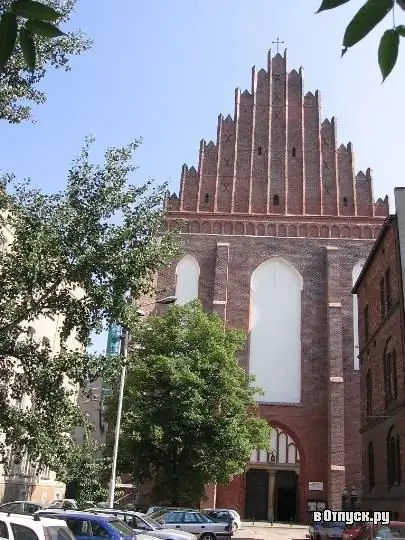
Description of the attraction
Church of St. Stanislaus, Dorothea and Wenceslas is a late Gothic Franciscan monastery located in the southern part of Wroclaw's Old Town.
The church was founded in honor of the agreement on the rights of Silesia, concluded between Casimir the Great and Charles IV. The construction was completed in 1351, and the altar appeared in 1381. The church had three naves, the total height of the building was 83 meters.
In 1530 the church passed to the Franciscan order. In 1686 the church building was rebuilt in a baroque style with rich interiors. In 1817, a prison was housed in the building of the monastery, and after 1852 - the city court. At the end of the 19th century, it was decided to demolish the monastery in order to free up land for the construction of a department store and a hotel. In connection with these changes, the facade of the church was changed, the entrance was redesigned in the neo-Gothic style. Numerous baroque altars appeared in the aisles of the church. In the western part of the south nave is the tomb of Baron Heinrich von Spatgen Gottfried. In 1925, a new large organ was brought to the church from Frankfurt an der Oder.
During the Second World War, the church received only minor damage and is one of the best-preserved medieval buildings in Wroclaw.






